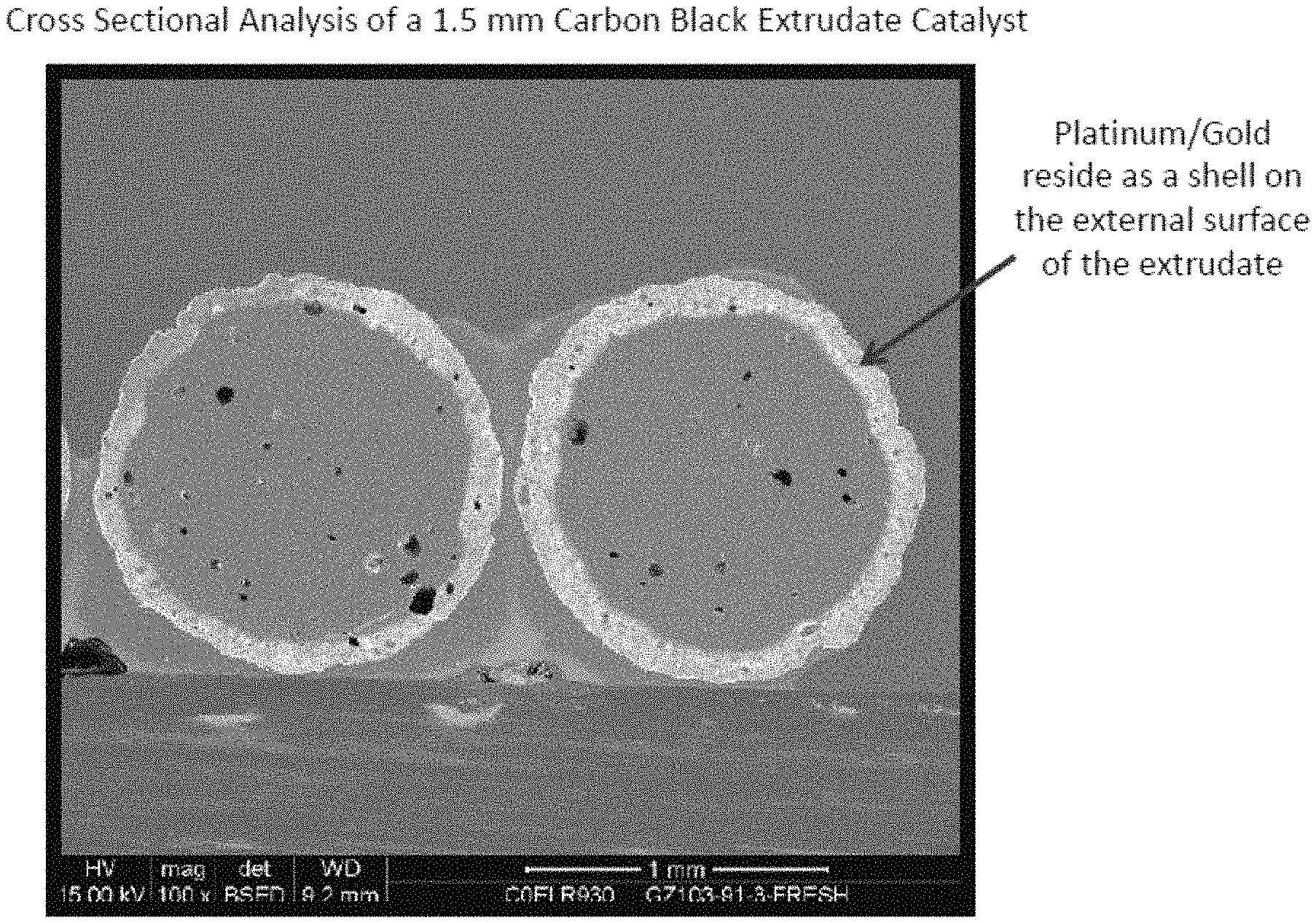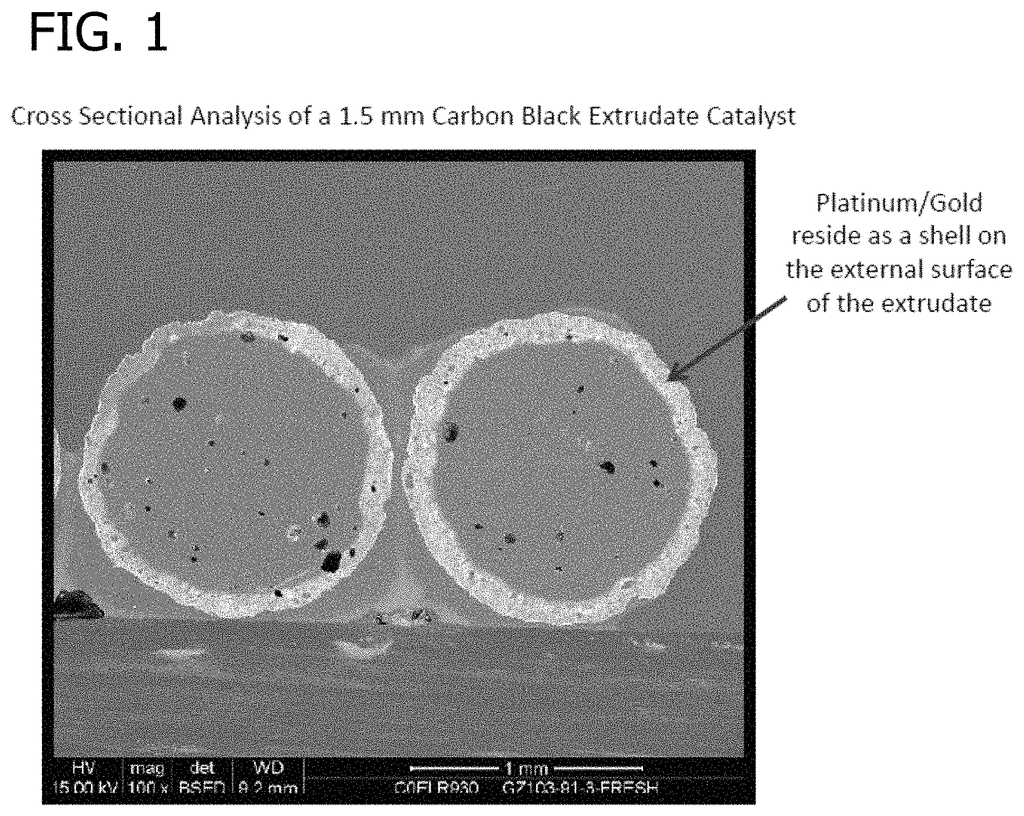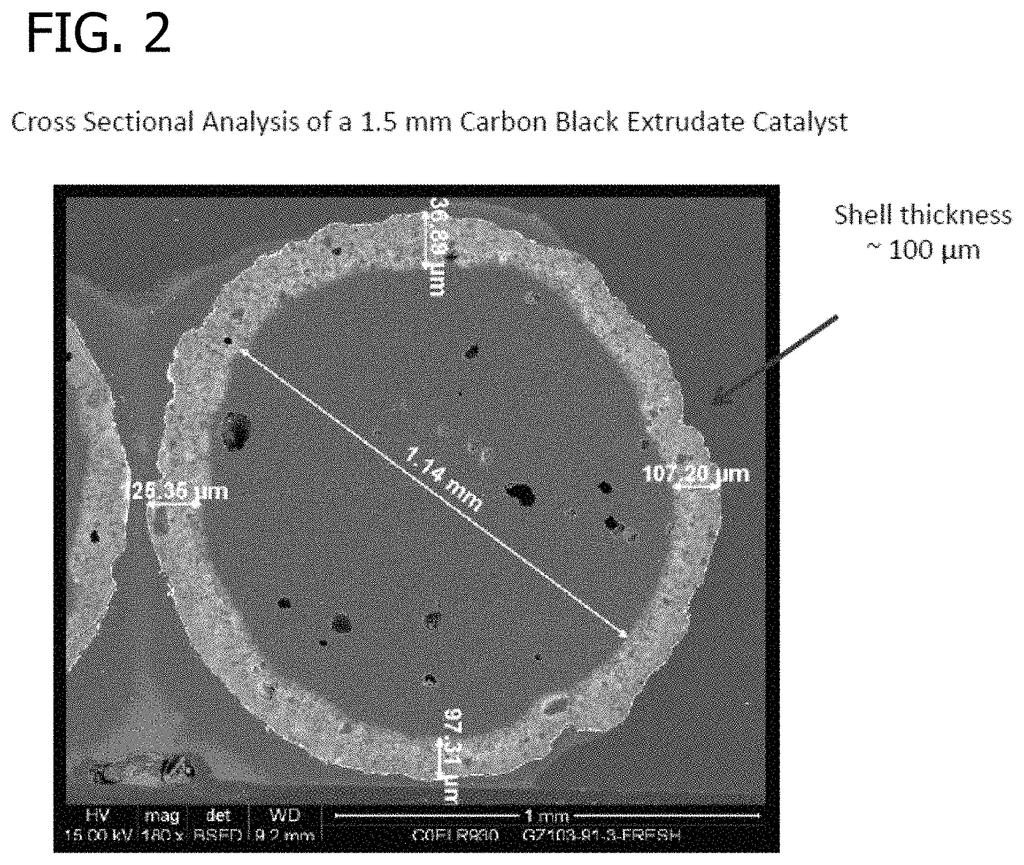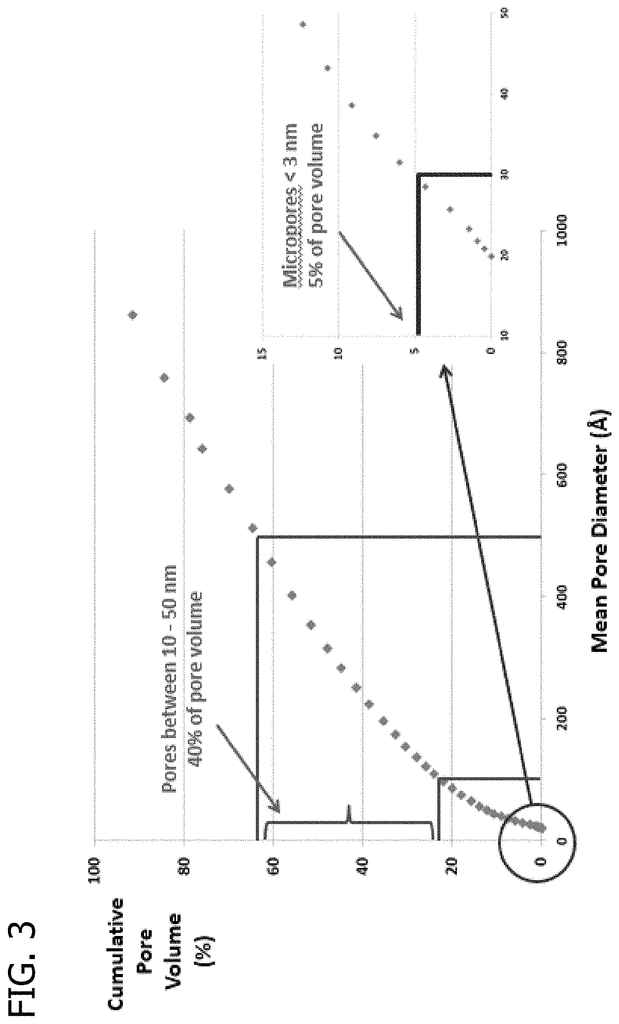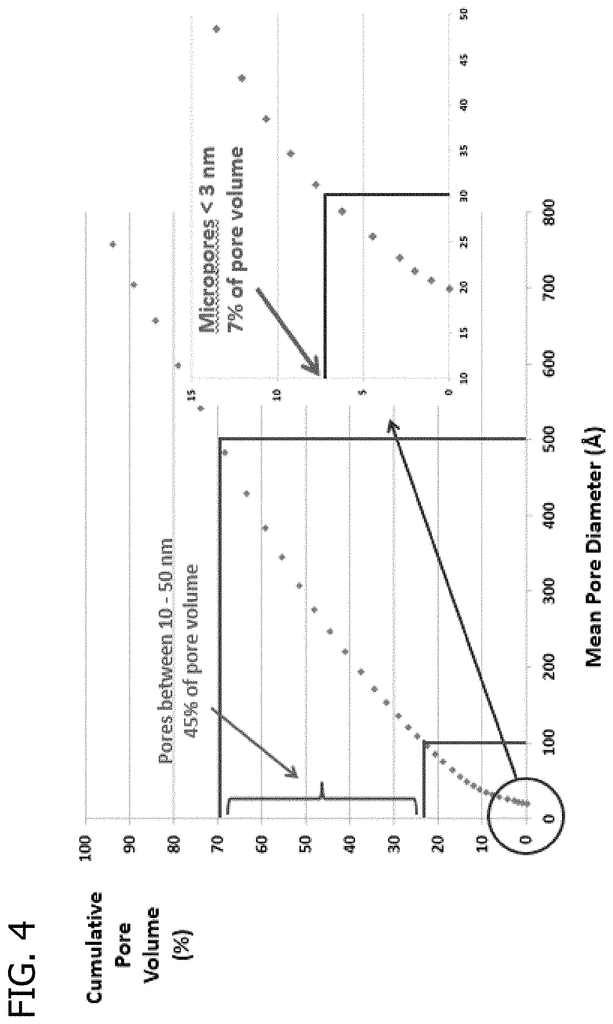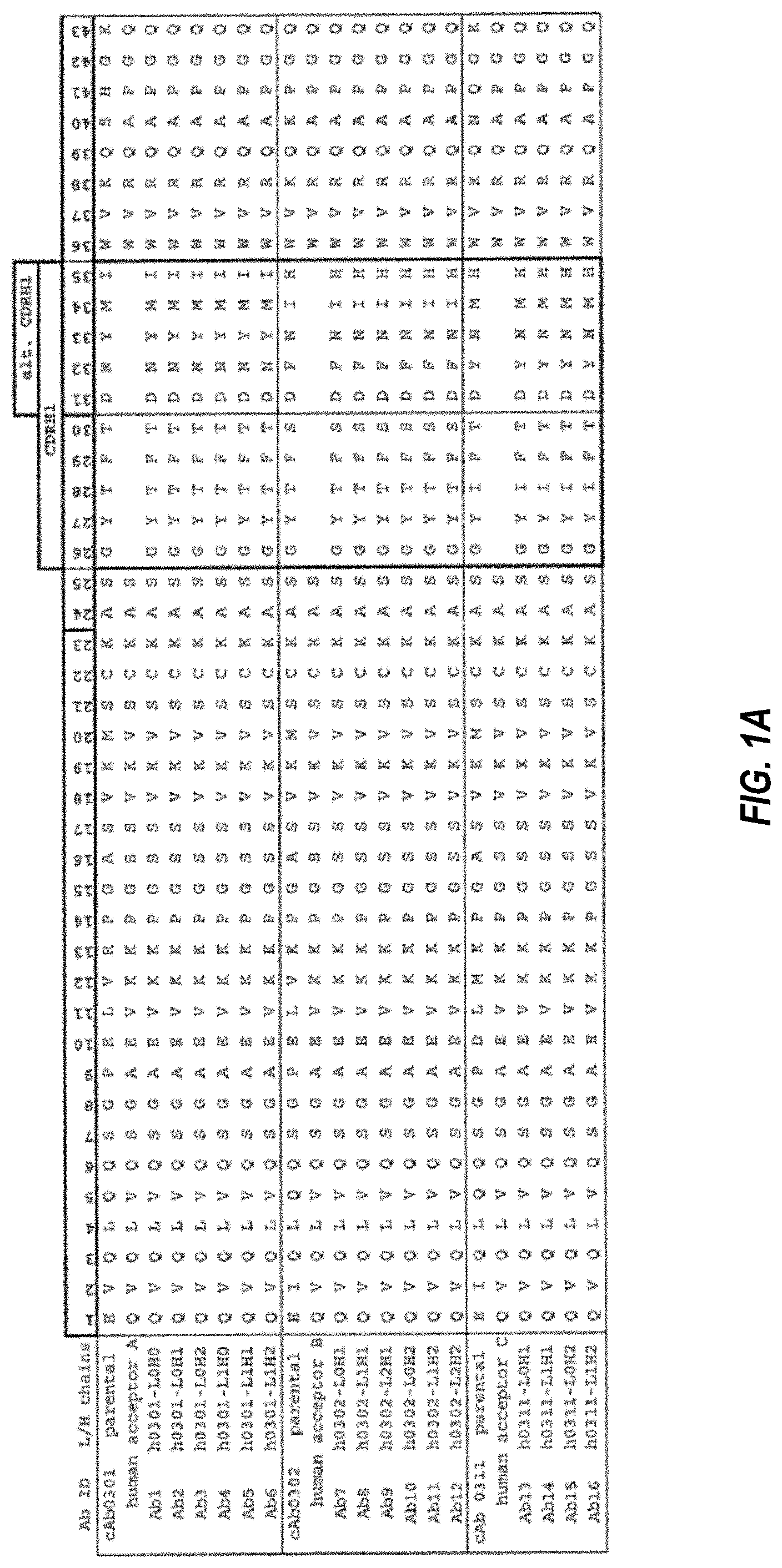Invented by Eric L. Dias, Alfred Hagemeyer, Hong X. Jiang, James Longmire, James A. W. Shoemaker, Valery Sokolovskii, Guang Zhu, Vincent J. Murphy, Gary M. Diamond, Archer Daniels Midland Co
One of the key drivers of this market is the growing need for energy storage solutions. Shaped porous carbon products, such as carbon foams and carbon fibers, have excellent electrical conductivity and high surface area, making them ideal materials for energy storage devices like supercapacitors and batteries. These products offer superior performance in terms of energy density, power density, and cycling stability, making them highly sought after in the renewable energy sector.
Another significant application of shaped porous carbon products is in water treatment. With the increasing scarcity of clean water sources, there is a growing demand for efficient and cost-effective water treatment technologies. Shaped porous carbon products, with their high porosity and large surface area, are excellent adsorbents for removing contaminants from water. They can effectively remove organic pollutants, heavy metals, and even microorganisms, making them an essential component in water purification systems.
Additionally, shaped porous carbon products find applications in gas separation processes. The unique porous structure of these materials allows for the selective adsorption and separation of gases. This makes them valuable in industries such as natural gas processing, air separation, and carbon capture and storage. Shaped porous carbon products can effectively remove impurities and separate different gases, contributing to increased efficiency and reduced environmental impact in these processes.
The market for shaped porous carbon products is also driven by advancements in manufacturing technologies. Researchers and manufacturers are constantly developing new methods to enhance the properties and performance of these materials. This includes the development of novel shaping techniques, such as 3D printing and templating, which allow for the production of complex and customized shapes. These advancements enable the production of shaped porous carbon products with tailored properties, expanding their range of applications and attracting new customers.
In terms of geographical distribution, the market for shaped porous carbon products is witnessing significant growth in Asia-Pacific, particularly in countries like China, Japan, and South Korea. These countries have a strong presence in industries such as electronics, automotive, and energy storage, which are major consumers of shaped porous carbon products. North America and Europe also contribute to the market growth, driven by the increasing focus on renewable energy and environmental sustainability.
In conclusion, the market for shaped porous carbon products is experiencing steady growth due to their unique properties and versatile applications. The increasing demand from industries such as energy storage, water treatment, and gas separation is driving the market expansion. With advancements in manufacturing technologies and the growing need for sustainable solutions, shaped porous carbon products are expected to continue gaining prominence in the global market.
The Archer Daniels Midland Co invention works as follows
Shaped Porous Carbon Products and Processes for Preparing These Products are Provided.” These shaped porous products can serve as adsorbents and catalyst supports, for instance. “Catalyst compositions containing these shaped carbon products are provided, as well as processes for preparing them and different processes for using them.
Background for Shaped porous carbon products
Carbon is a material which can be used as a catalyst or adsorbent. Carbon based supports with high specific surfaces (e.g. over 500 m2/g) are the most common. To prepare activated carbon, a carbonaceous substance such as charcoal or wood or coconut shell, or carbon black derived from petroleum, must be activated either chemically, by contacting it with an acid under high temperatures, of by steam. Both activation methods produce high micropore concentrations, and therefore higher surface area. The activated carbons produced may contain a large amount of sulfur and inorganic ash, as well as functional groups containing oxygen or nitrogen at the surface, depending on the origin of the carbonaceous materials. “Activated carbons have been found to be an ideal support structure for catalytic application as they allow good dispersion and adsorption of catalytically-active components, and also effective adsorption of chemical reagents and their reaction at the catalyst surface.
In recent years there has been an increasing interest in using biorenewables as a feedstock, to replace or complement crude oil. Klass, Biomass For Renewable Energy, Fuels, and Chemicals, Academic Press, 1997. All cited publications and this publication are incorporated by reference. The selective removal of oxygen from carbohydrates is one of the biggest challenges in converting biorenewables such as carbohydrate (e.g. glucose derived starch, cellulose, or sucrose into commodity and specialty chemicals. There are several approaches for converting single carbon-oxygen bonds into carbon-hydrogen bond. U.S. Patent No. No. No. 8,669 397 describes a method for converting glucose into adipic acids via glucaric acid as an intermediate. The catalytic conversion of biorenewably derived molecules and intermediates that are highly functionalized can be challenging because it is difficult to achieve the high levels in catalytic activity and selectivity required for commercial applications. In terms of catalytic selectivity and activity, highly functionalized biorenewable-derived molecules and intermediaries derived from carbohydrates, such as glucose and glucaric acids, are non-volatile, and therefore must be processed in liquid phase. Liquid phase catalytic process are known to have lower productivity than gas phase catalytic systems because the diffusion rates from liquid to solid and gas to liquid-to-solid are slower.
Another challenge associated with the catalytic transformation of highly functionalized biorenewable molecules and intermediates, is the use chemically aggressive reactions conditions. U.S. Pat. No. No. Polar solvents are typically required for the dissolution of non-volatile, highly-functionalized molecules such as glucose and glucaric acid, and elevated temperatures are required for productive and affordable catalytic conversion steps for commodity chemical applications. Catalyst stability is a major challenge in the catalytic transformation of biorenewable molecules and intermediates. “Long-term catalyst stability is essential for the production of commodity chemicals, which means that the catalyst needs to be stable, productive and selective for long periods.
The challenges in developing industrially shaped catalysers, particularly for the conversion of biorenewably derived molecules and intermediates are: a) high selectivity and productivity consistent with an industrially viable catalyst, b) chemical and mechanical stability of the shaped catalyst support, and c), retention of catalytically-active components by the catalyst support, and avoiding leaching into a polar solution reaction medium. It is still necessary to develop catalyst supports that are industrially scaleable, highly selective, and stable, and can meet these challenges.
The present invention, in its various aspects, is directed towards shaped porous products. According to various embodiments, according to the shaped carbon products, carbon black is combined with a binder carbonized from a carbonization of an organic water-soluble binder. The shaped carbon products also have a BET surface area between about 20 m2/g and about 500 m2/g; a mean pore size greater than 5 nm; a specific volume greater than 0.1 cm3/g; a radial crushing strength greater than 4.4 N/mm (1lb/mm); and %. According to other embodiments, in accordance with the shaped carbon products, the carbon agglomerate has a diameter of at least 50 mm, a surface area BET from 20 m2/g up to 500 m2/g (or 25 m2/g up to 250 m2/g), a mean pore size greater than 5 nm and a specific volume greater than 0.1 cm3/g. The radial piece crushing strength is greater than 4.4 N/mm (1lb/mm)
The present invention also includes methods for preparing porous carbon shapes. According to various embodiments, a method for preparing a porous shaped carbon product includes mixing water, a water-soluble organic binder, and carbon black to form a carbon mixture, forming the mixture to create a shaped composite, and heating the composite to carbonize it to an insoluble state.
Aspects” of the invention also relate to catalyst compositions, and the methods used to prepare them. A catalyst composition, for example, according to different embodiments includes a porous carbon product shaped in a particular shape as a support catalyst and a catalytically-active component or precursor of that component at the surface of the support. A second catalyst composition contains a shaped carbon support with a catalytically-active component or precursor of platinum and gold on the surface. Another catalyst composition includes a shaped carbon support with a catalytically-active component or precursor of platinum and rhodium on the surface. The present invention provides methods for preparing catalyst compositions by depositing a catalytically-active component or precursor on a shaped carbon product.
In other aspects, the invention is directed towards various processes for using the porous carbon shapes and catalyst compositions. According to the present invention, a catalytic process for a reactant is achieved by contacting a medium containing the reactant in a liquid with a catalyst formulation of the invention. Other processes include selective oxidation to aldaric acids of an aldose and selective hydrodeoxygenation to dicarboxylic acids of an aldaric or salt, ester, or lactone of the aldaric. The present invention also relates to methods for preparing a reaction vessel in liquid phase catalysis. The method comprises charging the reactor vessel a catalyst composition according to the present invention.
Other objects and features are described in the following paragraphs.
The present invention relates in general to products of shaped porous charbon and the processes used to prepare these products. These shaped porous products can be used as catalyst supports, support materials for chromatography, filtration media or adsorbents. “The present invention also relates shaped carbon products including catalyst compositions comprising these products, methods of preparing catalyst compositions and various processes for using the shaped carbon products and catalyst products.
The present invention provides products made of shaped porous Carbon that are high-strength and resistant to crushing or attrition. The shaped porous products are also chemically stable to acids and other polar or reactive solvents, even at high temperatures. “The shaped porous products are well suited for liquid-phase catalytic reaction because they allow for mass transfer of compounds with relatively large molecular volume to and from the surface of support.
The present invention also provides methods for preparing shaped porous products of carbon. The products are made from readily available and inexpensive materials, which improves the economics of the process. The disclosed processes can be used to prepare robust, mechanically-strong, shaped porous products by using water-soluble organic binders. These processes do not require organic solvents, which are difficult to handle and store.
The present invention also provides catalyst compositions that include the shaped porous products as catalyst supports, and processes for preparing such catalyst compositions. The shaped carbon products retain a large amount of the catalytically-active component(s) in the catalyst compositions. This helps to avoid or reduce the amount of catalytically-active material that is leached out into the liquid phase reaction medium. The catalyst compositions also possess a high level of stability, which is essential for the production of commodity chemicals.
The present invention also provides processes that utilize shaped porous products and catalyst compositions. These include the conversion of biorenewably derived molecules and intermediaries for commodity applications (e.g. the selective oxidation glucose to glucaric acids) or applications requiring the adsorption compounds with relatively large molecular volume. It was found, to the surprise of many, that the shaped carbon products have a superior mechanical performance (e.g. mechanical piece crushing strength and/or radius piece crushing strength) and that catalyst compositions containing the shaped carbon products of this invention provide unexpectedly higher productivity and selectivity in certain reactions compared with similar catalyst compositions using different catalyst support materials.
Shaped porous carbon products and methods of preparation
Carbon black can be used to make the porous carbon shapes of the invention. Carbon black is available in many subtypes, including acetylene, conductive, lamp, and thermal black. The furnace and thermal processes are the primary methods for producing carbon black. Carbon black is generally produced by deposition of solid particles of carbon formed in the gaseous phase through combustion or thermal cracking. Carbon black is characterized by nanometer-sized particles, usually between 5 and 500 nm. Comparing these materials to activated carbons, they have a lower surface area, a greater concentration of mesopores and ash, as well as fewer sulfur and ash. Carbon black is used in many commercial applications, including fillers, pigments and viscosity moderators. Carbon black materials have very low surfaces and are therefore not used for chemical catalysis, or as adsorbents. Carbon black materials with low surface areas can be considered unsuitable as supports for catalytic purposes because they are thought to hinder the dispersion and activity of catalysts.
As noted, activated charcoals are considered to be the best support for catalytic application as they allow good dispersion and reaction of chemical agents at the surface of catalysts. Carbon black has not been used as a catalyst supporting material. To use carbon blacks for chemical catalysis support, several groups reported methods of modifying carbon black materials. The reported modifications focus on increasing the surface area of carbon black materials. U.S. Pat. No. No. Carbon black can be converted into activated carbon that is used in commodity applications. U.S. Pat. No. No.
Despite these teachings, there has been an unexpected discovery that certain carbon-black materials with particular combinations of properties such as surface area and pore volume and pore diameter, are highly effective in the use of shaped porous catalyst supports for catalytic reaction mediums including liquid or mixed phase reaction media. The shaped carbon products of the invention can be formed into chemically and mechanically robust forms which can withstand process conditions and allow for stable long-term catalytic operation. These shaped carbon products offer high selectivity and productivity during continuous flow operation for long periods of time under challenging reaction conditions, including liquid phase reactions where the catalyst composition is exposed at high temperatures to acids and water.
Carbon black can make up a significant portion of the porous shaped carbon product of this invention. The carbon black content is therefore at least 35 wt. At least 40 wt. %, a minimum of 45 wt. %, a minimum of 50 wt. %, a minimum of 55 wt. %, a minimum of 60 wt. %, a minimum of 65 wt. At least 70 wt. %. Carbon black is present in the porous carbon products with different shapes. The carbon content varies from 35 wt to 80 wt. About 80 wt. From about 35 wt. % up to 75 wt. From about 40 wt. About 80 wt. From about 40 wt. “From about 40 wt. %.
In various embodiments The BET surface Brunauer, Em J. Am. Chem. Soc. “1938,
The carbon black materials have a mean diameter of pore greater than 5 nm. They also have a greater than 10 nm. In some embodiments the mean pore size of the carbon-black materials used to make the shaped porous product ranges from approximately 5 nm up to 100 nm. It can also be in the range from 5 nm up to 50 nm or even from 5 nm down to 25 nm. These pore diameters allow for the efficient transport of large molecules (such as biorenewably derived molecules with 6-carbon-atom frameworks), into and out the pore structure on the catalytically activated surface.
Click here to view the patent on Google Patents.
